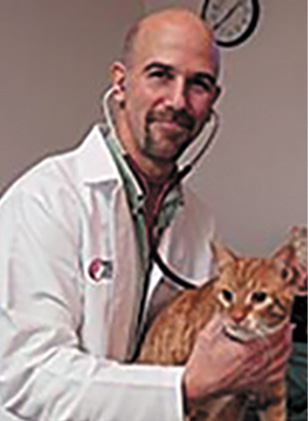Q: Our kitty recently died of a “massive bacterial or fungal” infection. We can understand

Fungi are found in the soil around us.
bacterial, but what is a fungal infection? How do cats get them?
A: I am sorry to hear of your loss. Please accept my deepest condolences.
The consequences of fungal infections in cats can vary from relatively benign to potentially life threatening, depending upon the species of fungus involved, how widespread the infection is and which organs are infected, rapidity with which a diagnosis is made, and the therapy provided.
While a complete discussion of fungal infections in cats is beyond the scope of this article, perhaps a brief review of some salient points would be helpful.
Fungi are a unique life form that are neither animal nor plant. They occupy their own kingdom, which includes microscopic forms like yeast and molds and the more familiar forms that are visible to the naked eye, mushrooms.
Fungi are found worldwide, and they play an important role in the degradation of organic matter in the environment. They acquire nutrition by absorbing nutrients from the environment and may be found in soil, decaying matter, and the nitrogen-rich excretions of animals like birds and bats.
An interesting characteristic of some types of fungi, called dimorphic fungi, is that they can exist in either one-celled forms called yeasts or in multi-cellular forms that are characterized by a branching, plant-like structure (not visible to the naked eye) called molds, depending upon environmental conditions.
Generally speaking, the species of dimorphic fungi that cause disease in animals and humans exists as molds when they are in the environment (probably because of relatively lower temperature) and as yeasts when they are raised to the body temperature of the organisms that they infect. The mold forms of these species can produce reproductive spores, which can be found ubiquitously in the environment and which serve as sources of infection when they are inhaled or (perhaps) ingested. In some cases, spores can infect breaks in the skin caused by cuts or scrapes, leading to fungal infections of the skin. The most common of these skin infections (the most common fungal infection of cats) is called dermatophytosis, or ringworm, which can infect cats, dogs, and people and can be passed from one species to another.
The most common fungal species that infect cats are microsporum (causes ringworm), aspergillus, cryptococcus, histoplasma, coccidioides, candida, and blastomyces. Skin infections by microsporum species are fairly common and generally less serious, while systemic infections by several other species are less common, but may have far more serious consequences, in some cases being life-threatening.
The symptoms of fungal infections in cats vary depending upon the species of fungus and the organ system affected. They can range from the hairless, reddish, crusted and inflamed skin lesions seen in ringworm infections to fever, loss of appetite, weight loss, lethargy, difficulty breathing, coughing, neurologic signs, ocular/nasal discharge, and swelling of the nasal cavity.
The diagnosis of fungal infections in cats can be challenging and usually involves either microscopic identification of organisms in body fluids or tissues, culture of fungi from body fluids or tissues, and/or the identification of fungal proteins or genetic material in body fluids or tissues.
A number of antifungal medications can be used to treat fungal infections in cats, and these may be administered either topically (for skin infections) or systemically, depending upon the type of infection and species of fungus involved. As noted earlier, the prognosis for feline fungal infections can vary widely, also depending upon the fungal species involved and the organ systems affected by infection.
Importantly, some feline fungal infections can be passed to people, so it is very important that you consult with your veterinarian and your health-care professional if your cat is diagnosed with a fungal infection.




